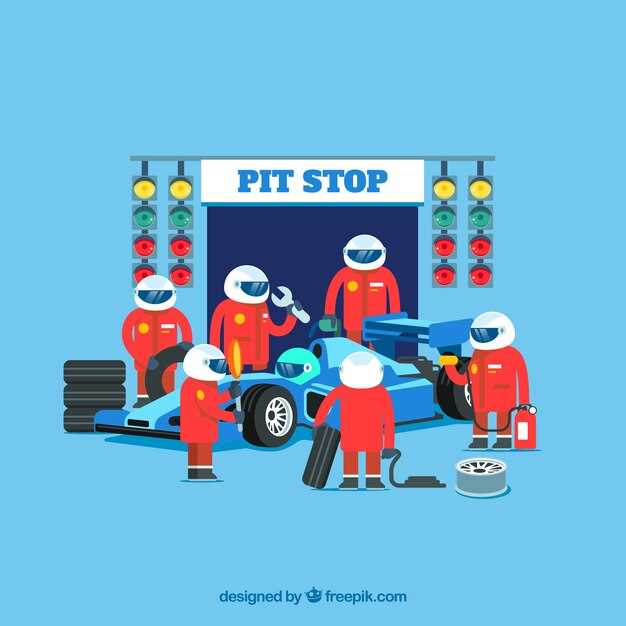
Participating in a rally event is an exhilarating experience that requires not only skilled driving but also meticulous prep of your vehicle. Ensuring your car is ready to tackle tough terrains and unpredictable conditions is crucial for both safety and performance. In this guide, we will walk you through essential steps to prepare your car for a successful rally.
The first step in your rally prep should focus on the vehicle’s mechanical integrity. Conducting a thorough inspection of the engine, suspension, brakes, and tires is vital. Each component must be in optimal condition to withstand the rigors of rally driving. Remember, a well-prepared car is the key to achieving better handling and reliability on the course.
Additionally, equipping your vehicle with the right tools and safety gear can make a significant difference during the event. From communication devices to essential spare parts, being prepared for every scenario can help you tackle challenges head-on. With the right preparations, you’ll not only enhance your performance but also enjoy the thrill of rallying with peace of mind.
Assessing Your Vehicle’s Condition Before the Rally

Before embarking on a rally, it is crucial to conduct a thorough assessment of your vehicle’s condition. This prep step can significantly influence your performance and safety during the event.
Start with the Engine: Check for any leaks, strange noises, or warning lights. Ensure that the oil, coolant, and other fluids are at the appropriate levels. A well-maintained engine is essential for optimal performance in the challenging rally conditions.
Tire Inspection: Examine all tires for wear and proper inflation. Rally terrains can be unpredictable; therefore, consider using specialized rally tires that provide better traction and handling. Inspect spare tires as well, making sure they are in good condition.
Brakes Evaluation: Ensure that brake pads, rotors, and fluid are in top shape. Effective braking is vital in rallying, where sudden stops and maneuvers are common. Any signs of wear or a spongy pedal should not be ignored.
Suspension and Steering: Check the suspension components for any damage or excessive wear. Ensure that the steering is responsive and that there are no unusual noises. A robust suspension system is essential for navigating uneven surfaces and rough terrains during a rally.
Electrical System Check: Assess the battery, lights, and wiring. A reliable electrical system keeps essential functions operational, including navigation and communication tools. Replace any faulty components to prevent issues during the rally.
Safety Equipment: Make sure all safety gear, such as seatbelts, helmets, and roll cages, are compliant with rally regulations and in good condition. Personal safety should always be a priority in competitive settings.
By meticulously evaluating each aspect of your vehicle, you ensure that it is rally-ready. This preparation not only boosts your confidence but also enhances your chances of achieving a successful outcome during the event.
Essential Modifications and Upgrades for Rally Readiness

Preparing your car for a rally requires specific modifications to enhance performance and ensure safety. The first essential upgrade is a robust suspension system. Rally cars endure rough terrains, so investing in adjustable coilovers can significantly improve handling and stability.
Next, consider enhancing the engine’s performance. Upgrading the turbocharger or adding a cold air intake can boost horsepower and torque, crucial for navigating challenging rally stages. A high-performance exhaust system will also improve engine efficiency and sound, keeping your car competitive.
Braking systems are another critical aspect of rally prep. Upgrading to larger brake discs and high-friction brake pads will provide superior stopping power, essential for controlling speed on twisty and uneven surfaces.
Weight reduction is key in rally racing. Removing unnecessary components, using lightweight materials, or even installing a roll cage will improve your car’s power-to-weight ratio, making it more agile and responsive.
Don’t overlook tire selection. Rally-specific tires, designed for varied conditions, provide the necessary grip and durability for different surfaces, whether gravel, mud, or tarmac.
Finally, ensure your car is equipped with necessary safety features. A fire extinguisher, a first aid kit, and a racing harness are vital for driver safety. Rally events can be unpredictable, and being prepared can make all the difference.
Creating a Comprehensive Rally Prep Checklist
Preparing your car for a rally requires meticulous planning and attention to detail. A well-structured checklist can help ensure that no critical task is overlooked. Below is a comprehensive guide to creating your own rally prep checklist.
1. Mechanical Inspection
Begin with a thorough inspection of your vehicle’s mechanical components. Check the engine oil, coolant levels, and brake fluid. Ensure that all belts and hoses are in good condition and replace any that show signs of wear.
2. Tire Condition
Examine your tires for tread depth and any signs of damage. Rallying can be hard on tires, so consider investing in top-quality options suitable for different rally surfaces. Verify proper tire pressure before the event.
3. Suspension and Steering
Inspect your suspension system for any signs of leakage or wear. Ensure that the shock absorbers function correctly and that there is no play in the steering components. A responsive steering system is crucial for rally performance.
4. Safety Equipment
Check that all safety equipment is in place and functional. This includes harnesses, helmet, fire extinguisher, and first aid kit. Verify that the roll cage is secure and meets rally standards.
5. Electrical System
Test all lights and indicators, including headlights, brake lights, and turn signals. Inspect the battery for corrosion and ensure that the connections are secure. A reliable electrical system is vital during a rally.
6. Rally-Specific Modifications
If your vehicle has undergone modifications for rallying, ensure that all parts are properly fitted and functioning. This includes any enhanced performance parts, navigation systems, and communication devices.
7. Spare Parts and Tools
Prepare a kit with essential spare parts such as extra tires, bulbs, and fuses. Include tools necessary for on-the-go repairs, like wrenches, screwdrivers, and a jack. Being prepared for unforeseen issues is crucial during a rally.
8. Fuel System
Check fuel lines for leaks and ensure that your fuel tank is filled with the appropriate fuel type for the rally’s requirements. A reliable fuel system is essential for maintaining performance throughout the event.
9. Documentation
Gather all required documentation, including your rally registration, vehicle insurance, and any permits needed for the event. Keeping these documents organized and accessible is vital for a smooth check-in.
10. Final Preparations
In the days leading up to the rally, review your checklist regularly. Perform a last-minute inspection before leaving for the event to confirm that everything is in order. A solid prep checklist will enhance your readiness and confidence on race day.



